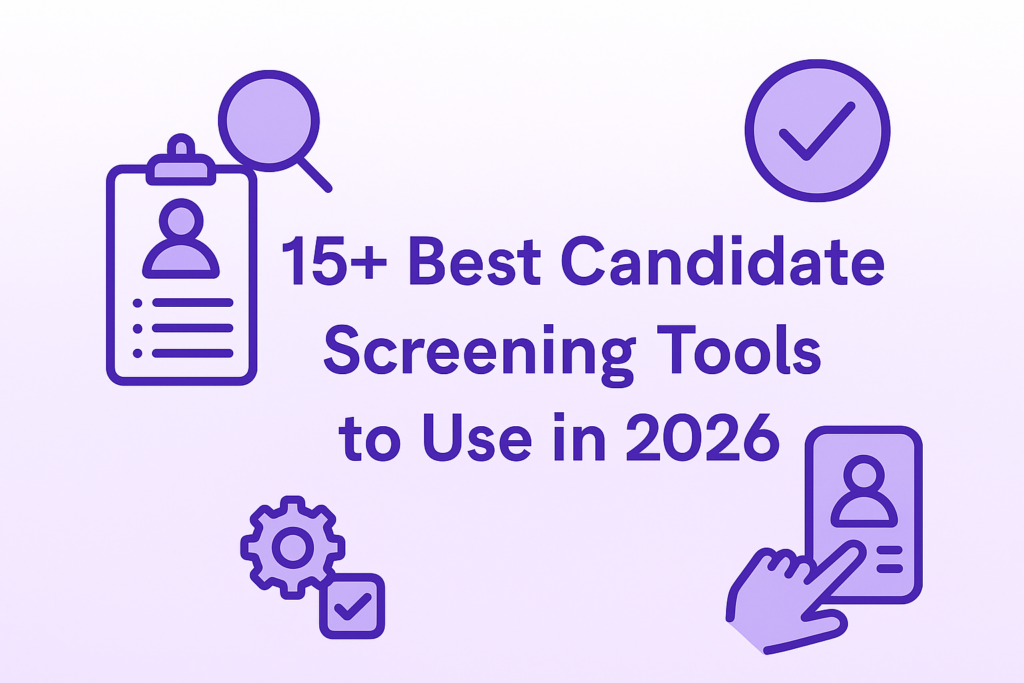Honestly speaking it’s time someone spoke the truth.
Managing employee performance nowadays proves rather a behemoth task. Your day’s already chock-full with crazy back-to-back meetings and a gazillion emails pinging frantically on Slack amidst urgent notifications.
You’re expected somehow to keep team morale sky high and track everyone’s performance fairly while ensuring goals get met pretty transparently.
Ringing any bells perhaps loudly?
Most businesses still bank on antiquated performance management tactics like yearly appraisals that seem disjointed and nebulous feedback galore that rankles employees. Stuff just isn’t functioning properly nowadays. Employee performance metrics kick in precisely here. When executed properly they transmute performance management into a clear data-driven entity minus a suffocatingly controlling work atmosphere.
What Are Employee Performance Metrics?
Measurable indicators serve as benchmarks helping you gauge employee contributions fairly well within their designated roles across organizations. They can be hard numbers like sales closed or tasks completed but softer signals such as teamwork ratings or peer feedback exist too.
They craft a holistic performance picture that shatters assumptions and enables managers and employees alike to hone in on vital stuff. They take guesswork out of evaluating employee performance and give you crystal clear data actionable pretty much for everyone involved ultimately.
You’ve probably felt utterly perplexed about someone’s state of being at some point and you’re hardly the only one struggling in darkness. Many managers trust gut feelings rather overtly over more rational analysis albeit quietly admitting such tendencies quite reluctantly nowadays.
What’s bothering you exactly? Instinct can be glaringly off base and profoundly inconsistent despite being deeply ingrained. Employee performance metrics supplant nebulous decision-making processes with stark clarity rather quickly.
Here’s why they matter:
Aligning Individual Goals with Business Objectives
Employees suddenly grasp everything when they see precisely how their tasks fit into the company’s grand scheme. They’re no longer merely ticking boxes; they’re deeply invested in endeavors that hold profound significance and purpose somehow nowadays.
Marketing managers keenly tracking lead conversion often intuitively know that their meticulously crafted campaigns fuel substantial revenue growth suddenly. Hitting sprint goals rapidly accelerates product launches for developers seeing their work gain considerable traction very quickly nowadays.
Alignment fuels engagement deeply because employees grasp why their work matters significantly within the organization. They focus squarely on tasks that drive business forward rapidly instead of juggling myriad unrelated responsibilities haphazardly every single day.
Metrics forge a bridge by lucidly mapping personal targets against overarching corporate aims so nobody’s left pondering does it even signify anything.
Driving Productivity and Accountability
Honestly productivity tends to devolve into sheer busywork without clearly defined targets. Performance metrics assigned to employees ostensibly remove ambiguity somewhat effectively nowadays.
Employees clearly understand what’s expected of them when success is explicitly defined and metrics are laid out pretty thoroughly beforehand. Accountability gets shifted pretty positively too. Managers don’t need to hover over people’s shoulders and constant check-ins aren’t necessary either somehow.
Employees can vigilantly track their own progress and make necessary adjustments swiftly when veering badly off course and celebrate wildly upon hitting major milestones. That feels pretty empowering nowadays. Employees feel trusted owning their performance and accountability follows quite naturally under such liberally guided circumstances.
Supporting Employee Growth and Retention
Metrics aren’t just about flagging stuff gone awry in some murky depths of an organization’s otherwise ostensibly smooth operation. They’re remarkably adept at highlighting stuff going right pretty well nowadays.
Managers can spot high performers early and reward them by analyzing key metrics of performance evaluation quite thoroughly. Pinpoint gaps in skills and provide targeted training rapidly. Provide gutsy critiques rooted deeply in hard facts not woolly hunches.
Targeted development like this radically alters retention dynamics overnight inside most organizations. Employees who feel sufficiently appreciated and bolstered by their organization are less likely to abandon ship pretty quickly afterwards.
Performance metrics build trust remarkably well and create a culture of growth where people are nurtured very intensely every single day.
Key Employee Performance Metrics to Track
Not every performance metric is crafted equally and definitely not each metric suits every role flawlessly in various organizational contexts. Almost every team can reap substantial benefits from monitoring certain core areas pretty regularly it seems.
Metrics establish a foundation pretty solidly for grasping performance of employees rather meaningfully in an actionable manner somehow. Breaking stuff down now sounds pretty straightforward.
Quality of Work
Quality isn’t merely about getting stuff done it’s about doing those things rather exceptionally well ordinarily every single time properly. Ponder precision thoroughly and steadfastly with unwavering commitment.
High-quality work often reflects an employee’s meticulous attention and genuine pride in their occupation with considerable expertise. Fewer mistakes occur naturally alongside less rework and considerably happier customers internally or externally in fairly significant ways obviously.
A software engineer crafts flawless code meanwhile a content writer produces meticulously researched error-free articles benefiting whole teams greatly nowadays. Measuring quality gets tricky because its subjective but common methods entail peer reviews or error rates and outcome-based indicators sometimes.
Productivity Levels
Let’s debunk such misconceptions thoroughly now productivity isn’t necessarily about slogging away tirelessly for long hours or completely burning oneself out. Output gets delivered efficiently with considerable meaningfulness.
- Are employees finishing tasks quickly enough nowadays or getting bogged down in minutiae with no end in sight apparently?
- Do they prioritize swiftness over precision or are accuracy and haste being awkwardly balanced by them somehow?
Productivity metrics gauge work output and cleverness with which tasks are accomplished quite effectively by and large nowadays. Measuring output entails tallying finished projects, resolved tickets and sales made alongside other role-relevant accomplishments sporadically over time quite effectively. Paired with quality measures it helps avoid a quantity over quality trap effectively somehow nowadays.
Goal Achievement (OKRs and KPIs)
Monitoring employee performance metrics or utilizing OKRs keeps performance pegged rather tightly to what ostensibly matters most genuinely.
Clear objectives preclude befuddlement and galvanize everyone’s endeavors resolutely towards propelling business operations forward vigorously in most cases.
Employees tracking progress against goals regularly creates intense focus and weirdly enough tons of motivation across various teams somehow. Stuff gets done when you measure it pretty much echoing that age-old “what gets measured gets done” mantra.
Attendance and Punctuality
You’d be gobsmacked how frequently attendance and punctuality fly under radar and get woefully neglected in a most insidious manner. Reliability matters greatly in roles involving high-stakes teamwork or customer interactions that require swift action under tight deadlines.
Late arrivals or unexplained absences often severely disrupt meetings and delay crucial projects thereby frustrating colleagues terribly. Tracking attendance regularly helps identify patterns early on like chronic lateness or frequent absences that signal burnout and disengagement very quickly.
Collaboration and Teamwork
Success rarely happens without external influences surrounding individuals. Most talented individuals utterly fail to supplant the sheer might of a robust team working harmoniously under gnarled circumstances.
Measuring collaboration proves trickier owing largely to its intangibility relative to numbers but remains pretty darn crucial nonetheless. Peer feedback and 360-degree reviews offer insights into employees’ communication skills and their ability to contribute rather effectively to shared goals.
Better innovation frequently surfaces alongside robust collaboration metrics and quite high team morale and markedly faster problem-solving capabilities.
Learning and Development
Employee growth trajectories serve as vital indicators of talent potential within organizations typically marked by robust talent pipelines nowadays. They build skills quite proactively keeping pace with evolving business needs in a remarkably adaptable manner down the line.
Managers identify those ready for fresh challenges or needing extra help by tracking metrics like finished training programs and new certifications earned. It sends a message that company culture prioritizes perpetual betterment rather than merely checking off tasks with varying degrees of efficacy.
Customer Satisfaction (CSAT/NPS)
Customer satisfaction measurement remains utterly crucial for teams interacting with customers daily in various capacities. CSAT and NPS metrics directly tie employee performance inextricably to overall customer experience outcomes very effectively every single time.
High scores underscore employees meeting expectations pretty well and bring areas needing improvement sharply into focus nowadays. Focusing on pertinent metrics yields a galvanizing snapshot of success morphing administrative drudgery into an energizing exercise geared towards individual responsibilities.
How to Measure Employee Performance Effectively?
- Combining Quantitative and Qualitative Metrics
Numbers matter greatly but they don’t reveal entire narratives behind stark figures. Coupling hard metrics with subjective observations such as manager feedback and self evaluations yields pretty nuanced understanding of overall performance.
- Customizing Metrics by Role
Salesperson metrics should starkly diverge from those belonging to designers and operations managers in several key respects obviously. Metrics tailored for specific job functions rather haphazardly ensure fairness pretty much and oddly enough relevance simultaneously.
- Using Continuous Feedback and Check-Ins
Annual reviews just aren’t cutting it nowadays apparently. Frequent check-ins and feedback sessions foster a perpetual discussion about performance making course corrections happen swiftly and wins get celebrated rapidly.

Best Practices for Implementing Performance Metrics
- Promoting Transparency and Fairness
Staff members ought to be cognizant of metrics used for evaluating their job performance pretty clearly at all times. Openly discussing metrics and clearly defining expectations somehow reduces anxiety quite significantly and builds trust within teams.
- Automating with Performance Management Tools
Relying on manual tracking via spreadsheets often culminates in utter frustration somehow. Automating employee performance evaluation processes saves loads of time and creates a pretty smooth ride for managers and staff alike.
- Conducting Regular Reviews and Progress Tracking
Regular progress assessments conducted pretty frequently like every quarter or sometimes even monthly keep performance discussions fairly current nowadays. They reinforce feedback being about growth rather than punishment quite emphatically nowadays.
Common Mistakes to Avoid When Tracking Performance
It’s ridiculously easy to botch performance tracking despite having stellar intentions.
- Beware of overloading staff with metrics which creates confusion and stress by measuring too many things rather pointlessly.
- Focus intently on essentials quickly.
- Customize metrics for each role rather than slapping the same old criteria across the entire organization with reckless abandon.
- Data sans context precipitates grossly erroneous conclusions utterly devoid of nuanced understanding and riddled with flawed assumptions mercilessly.
- Numbers should be judiciously combined with human insight and intuition rather than relied upon solely for making critical decisions.
- Performance needs evaluation pretty much all year round not just annually relying heavily on sporadic assessments and thorough ongoing monitoring.
Conclusion: Building a Data-Driven, High-Performing Workforce
Employee performance metrics empower organizations remarkably by clarifying what constitutes success and fostering a high level of accountability among managers effectively. Begin with several crucial metrics and hold conversations about progress regularly refining approaches continuously over time.
Performance management morphs into a catalyst for synergy and ascension with transparent metrics and continuous input building a squad where all members flourish.






